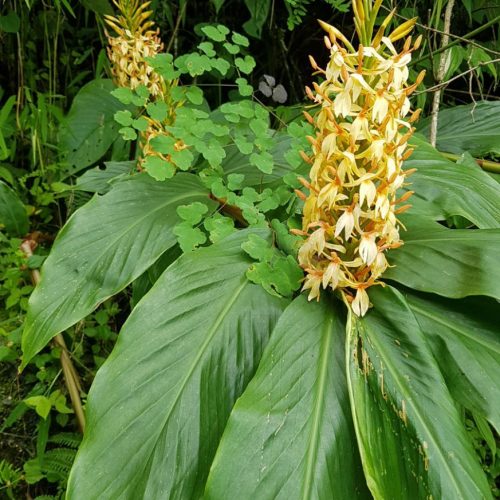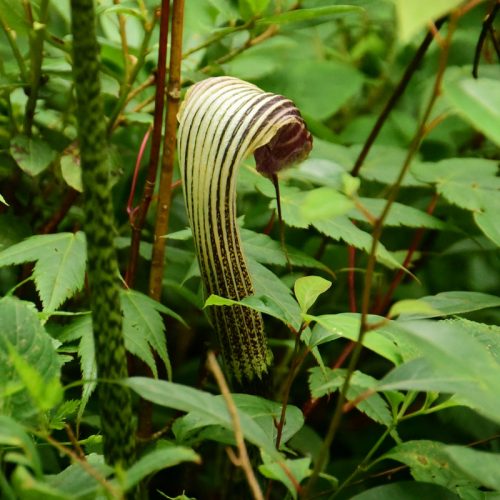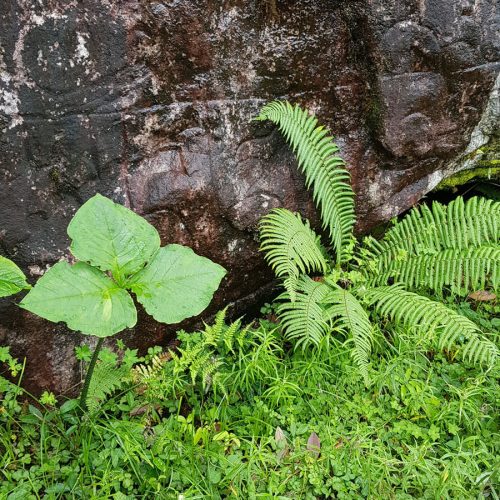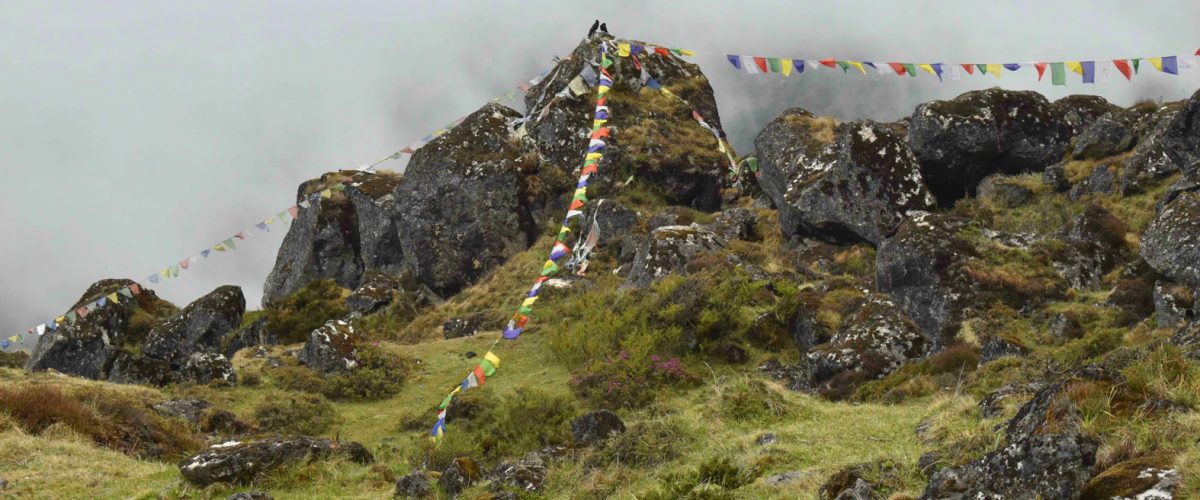
Nepal
Written on 15th August, 2019
The dust has barely settled on my second Show Garden at Chelsea, when I receive a surprise phone call from Trailfinders, asking me if I’d be up for a third next year, to celebrate their 50th anniversary in business:
“Our first ever destination was Kathmandu so can we have a Himalayan garden?”
It doesn’t take me long to accept the challenge, particularly after the Silver medal I received for my Chilean garden. I feel like I have some unfinished business at Chelsea and let’s face it, being paid to design another garden with very little interference from the sponsor is not something that you refuse. Plus I get to travel again, and study plants in the wild.
After some research in Scotland (the West Coast has a similar ish climate to some Himalayan regions, and we make some useful contacts there), I catch a flight to Nepal, with Rachel, who has agreed to help me again on the planting, and be a sounding board for all my ideas. We spend a few hours in Kathmandu sleeping off the effects of the flight, and selling one kidney each to pay for the prayer wheels that we need for the garden, before taking an internal flight to Lukla which is the starting point for treks to Everest base camp. It also has the dubious honour of apparently being the world’s most dangerous airport. Hooray! More adventure!

It soon becomes apparent why, as we fly through steeply forested gorges, and through the clouds spot a little strip of tarmac jutting out from the side of a mountain. The approach feels a bit sketchy and we exchange nervous and excited glances but it’s not too bad in the end, and we touch down bumpily, managing to screech to a halt before hitting the mountain at the end of the runway.
We’re met by PG, our guide for the next few days, and Saila who has drawn the short straw as our porter. Feeling a bit sheepish, we watch Saila strap Rachel’s bag to my rucksack with a few lengths of blue string, hoist the burden onto his lanky frame, and then set off at a mean pace we can’t keep up with. Throughout the rest of the trip, he is often found waiting, half a mile ahead of us, calmly puffing on a cigarette by the time we catch up with him, panting with the exertion of walking at over 4000m.
We’re here to study the plants, culture and landscape of the Himalayas. And boy what botanical wonders await us. There’s so much more to discover here, than there was in Chile; we’ve got better reference books, and a guide, and there are a lot more plants that have made it into UK gardens than in Chile. Real kid in a sweet shop stuff. We walk through misty and atmospheric rhododendron forests, and every time the mist clears we can see distant peaks with the unmistakable silhouettes of acers against their white snowy peaks.
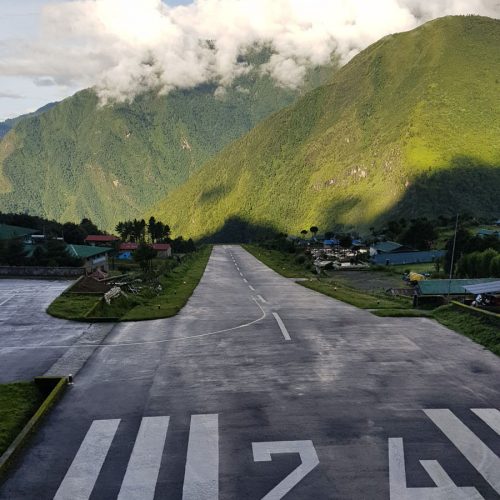
We’re a bit out of season and I want to see plants that we will be using next May, so we ask locals to point out where they have recently seen cardiocrinums, arisaemas, primulas, and of course, meconopsis, the famous Himalayan poppy. Needless to say, the most recent sightings invariably involve climbing a few hundred metres through the thin air, which sort of makes sense as it’s a bit colder, and the things we want to see are likely to have flowered later, higher up.
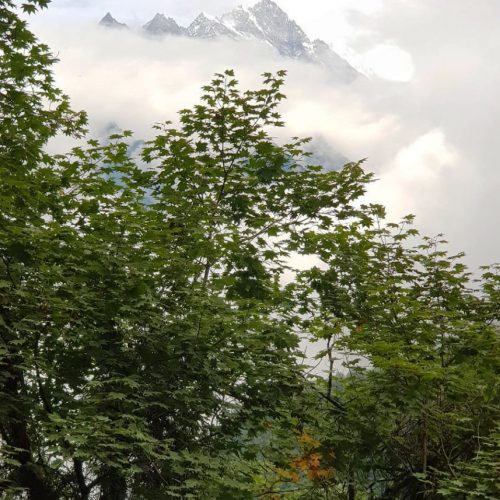
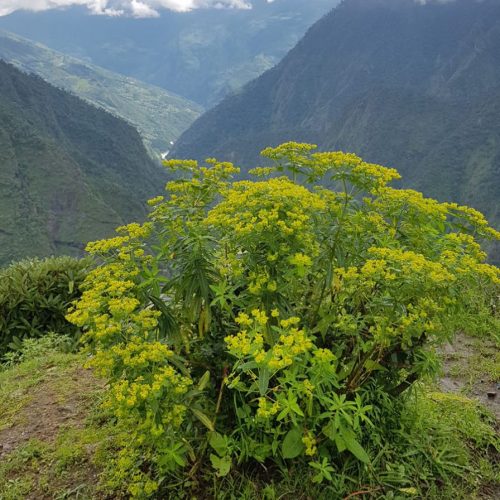
We see loads of hypericum. It’s a bit of a nothing shrub in the UK, but here it looks brilliant, even not in flower as the rain (of which there is plenty) runs off the leaves beautifully, in the same way it does with alchemillas and nasturtiums. Also recognisable are endless thalictrums which I love in my own garden, and members of the ginger family such as cautleyas, hedychiums, and roscoeas. Geraniums and ferns abound, including some enormous looking diplopterygium giganteum that would be amazing in cultivation but for some (probably good) reason haven’t made it into our gardens. It really is such a joy to see so many well known plants growing in their natural habitat and it teaches me so much about how to develop the planting design for the garden. Bergenias for example, look brilliant growing out of a dry stone wall, and I log that as a future spot for them in the garden.
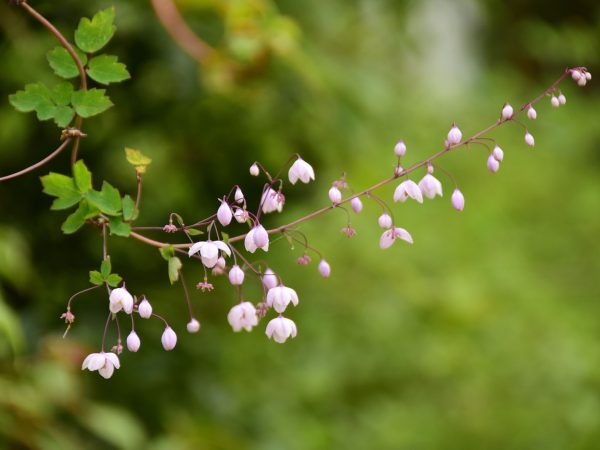
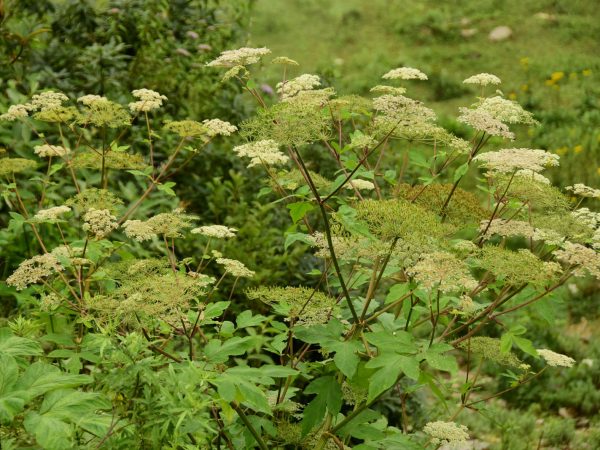
We cross gorges via huge swaying rope bridges, with torrents of water hurling themselves angrily down the mountain. It rains a lot, and between showers, leeches try to drop onto us from above, or crawl onto leaves overhanging the narrow paths, hoping we will brush past them so they can hitch a lift and bury themselves into our flesh, thereby inducing a state of wild panic. At the end of each day, we dry out in guest houses and write up any notes. We’re often the only westerners there as we’re out of climbing season so it’s dead quiet, and very peaceful. Food is simple. We both opt to go vegetarian for the duration of the trip, to protect our fragile western insides.
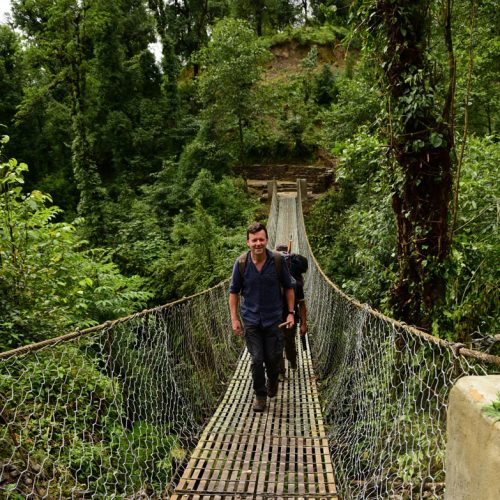
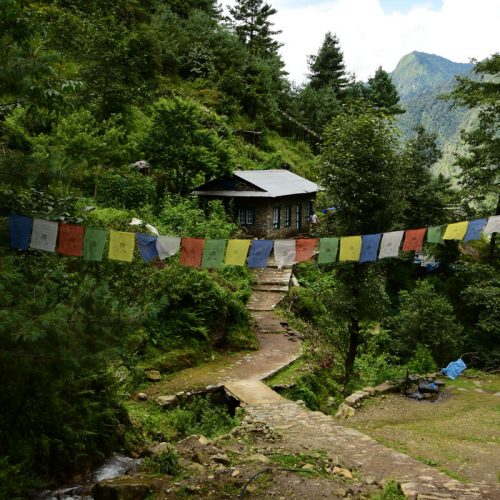
Coming into flower are the persicarias and ligularias. Also Selinum wallichianum and morina longifolia and I enjoy spotting them, studying how they grow and the conditions they thrive in. Little did I know how useful visiting in august would prove to be. We are about five months away from the start of the Coronavirus pandemic and, ultimately, a September Chelsea flower show.
The plan is not to fly out from Lukla as rainy season is upon us. We have a flight to catch home and we cannot rely on the internal flights to get us to Kathmandu on time. So, after a dispiriting night somewhere closer to civilisation, and away from the beauty and majesty of the Himalayan foothills, we endure a bone crunching eight hour drive down to Kathmandu. Rachel plugs herself into her ipod and leaves me to my thoughts, staring out of the window, my mind full of ideas for the garden, hoping I’ve managed to learn enough during our short time here, knowing we’ve only really scratched the surface, and hoping to come back soon.
